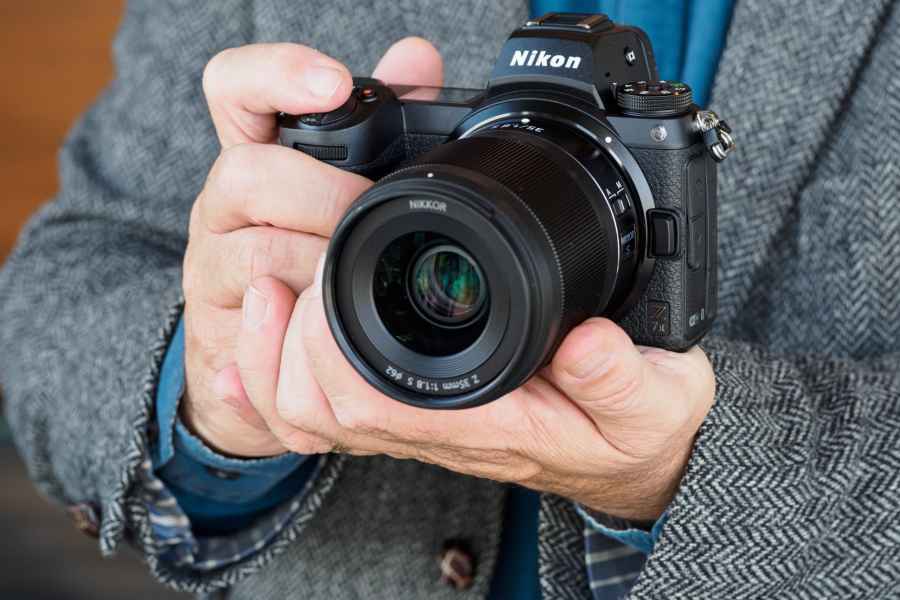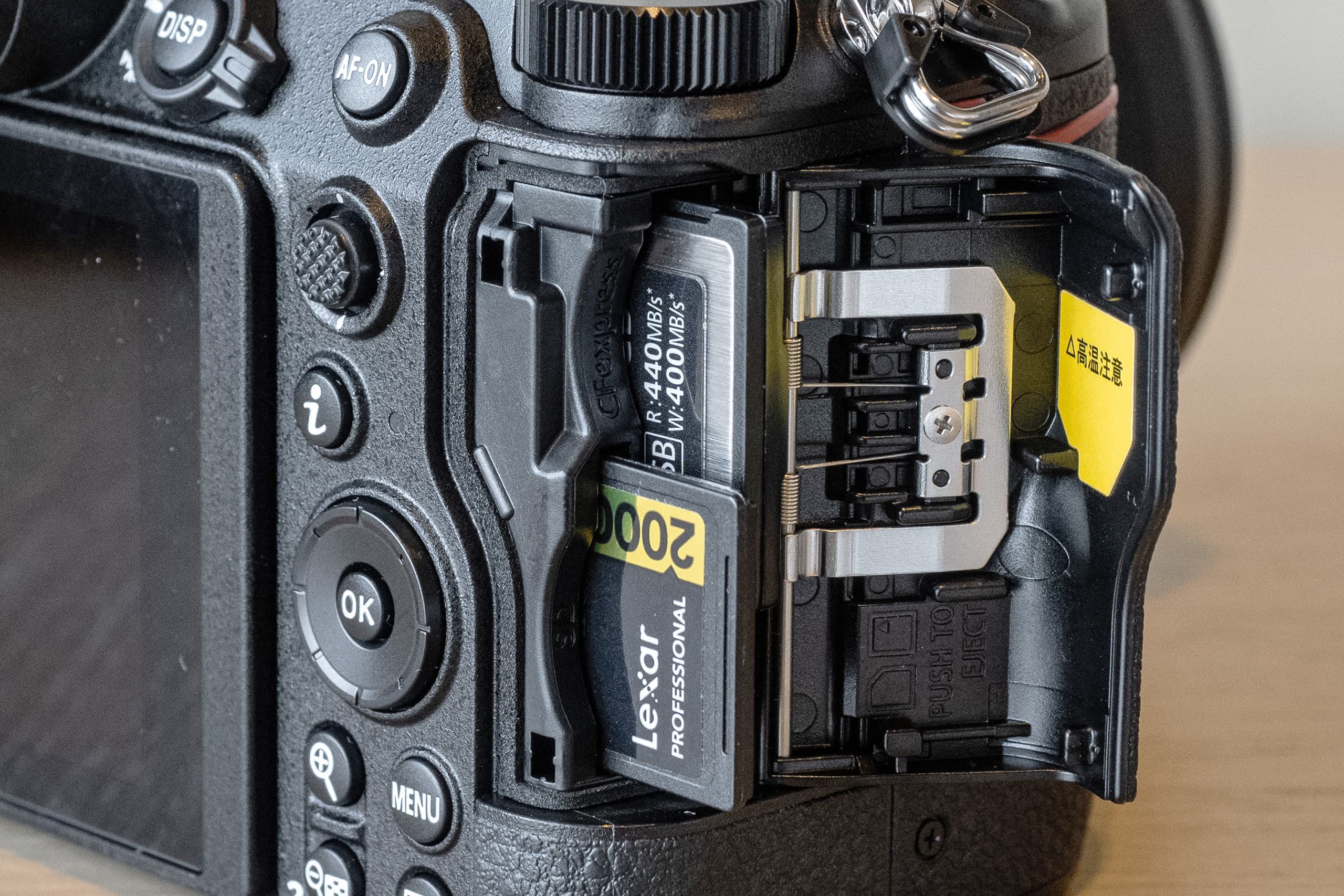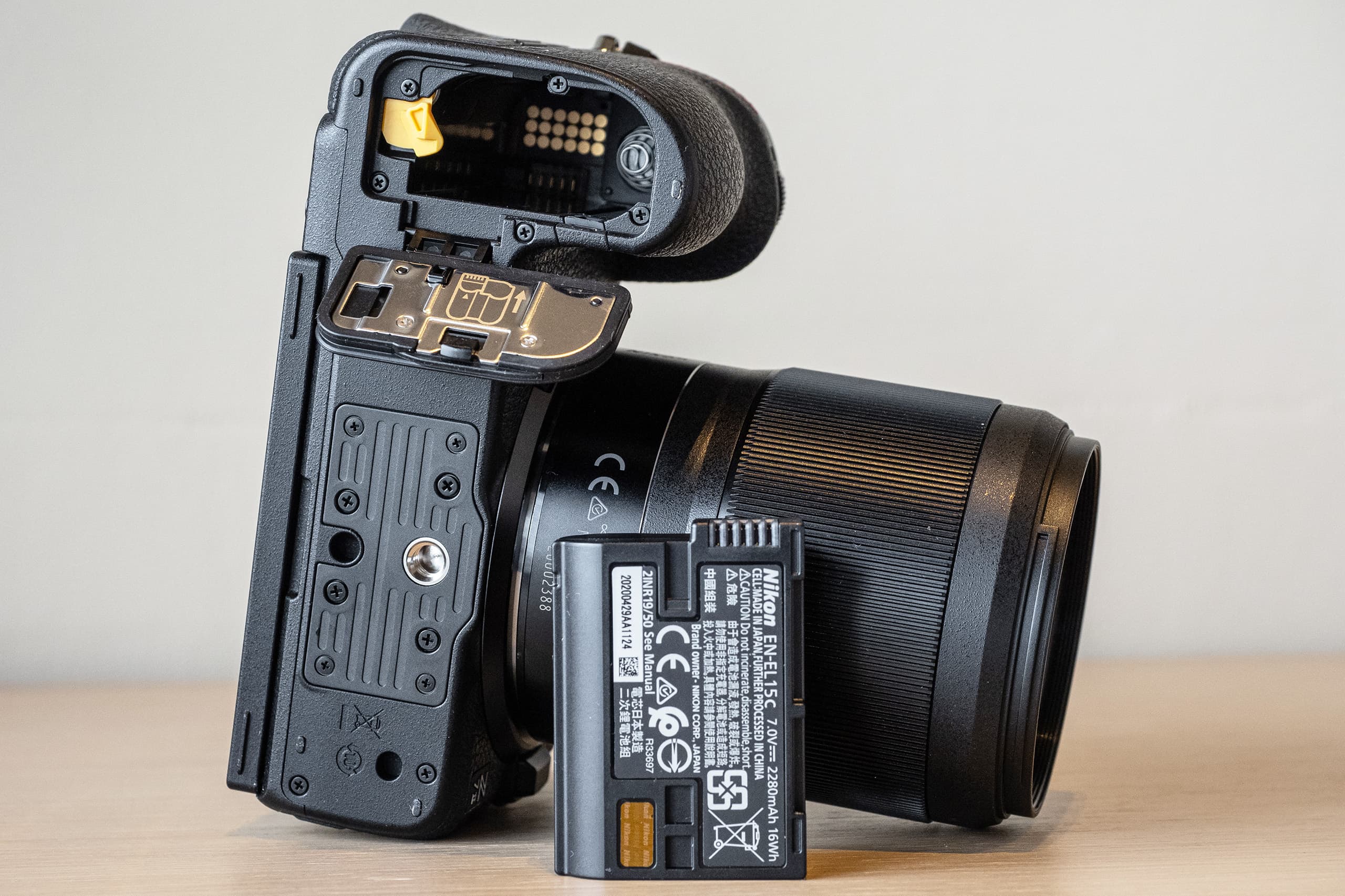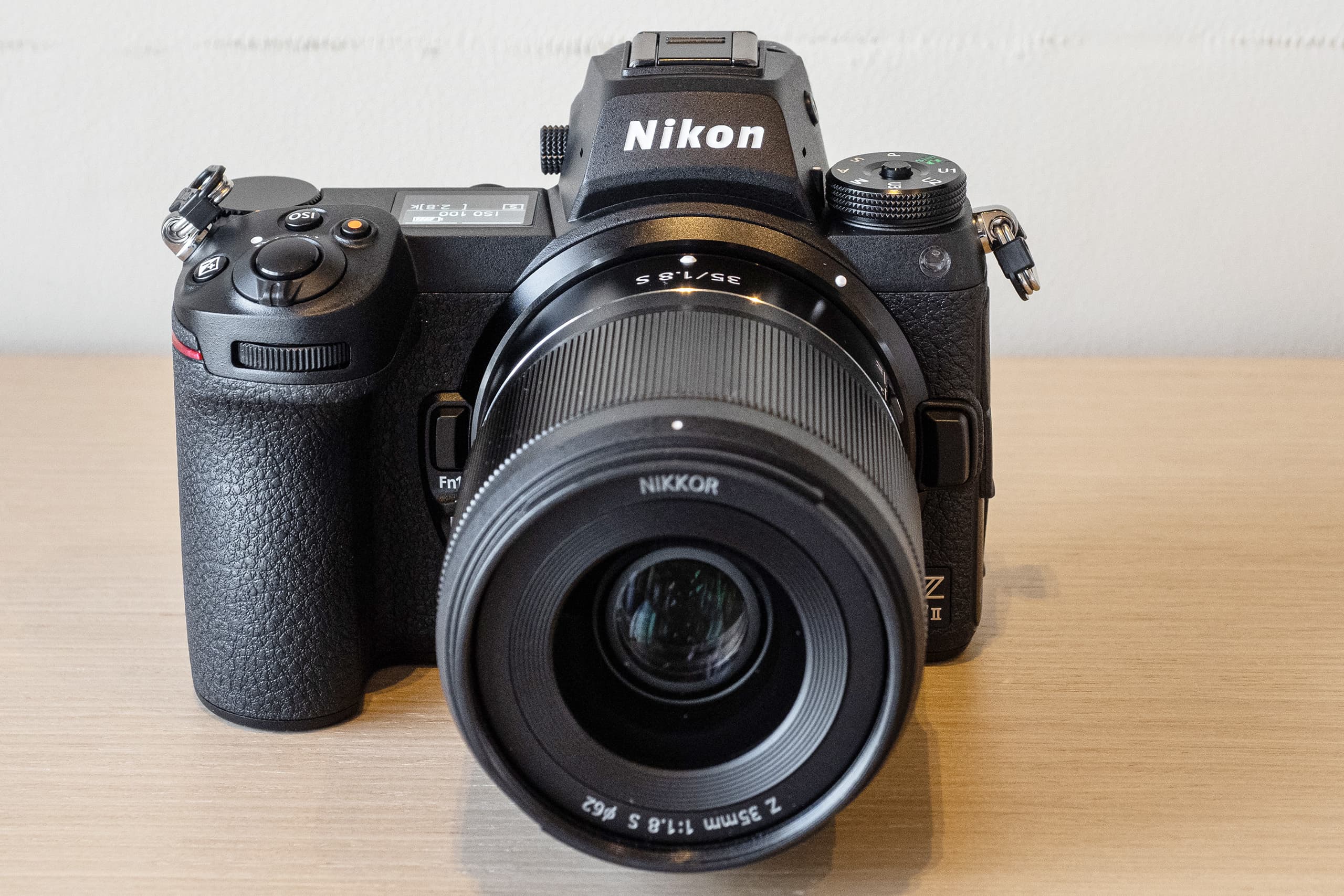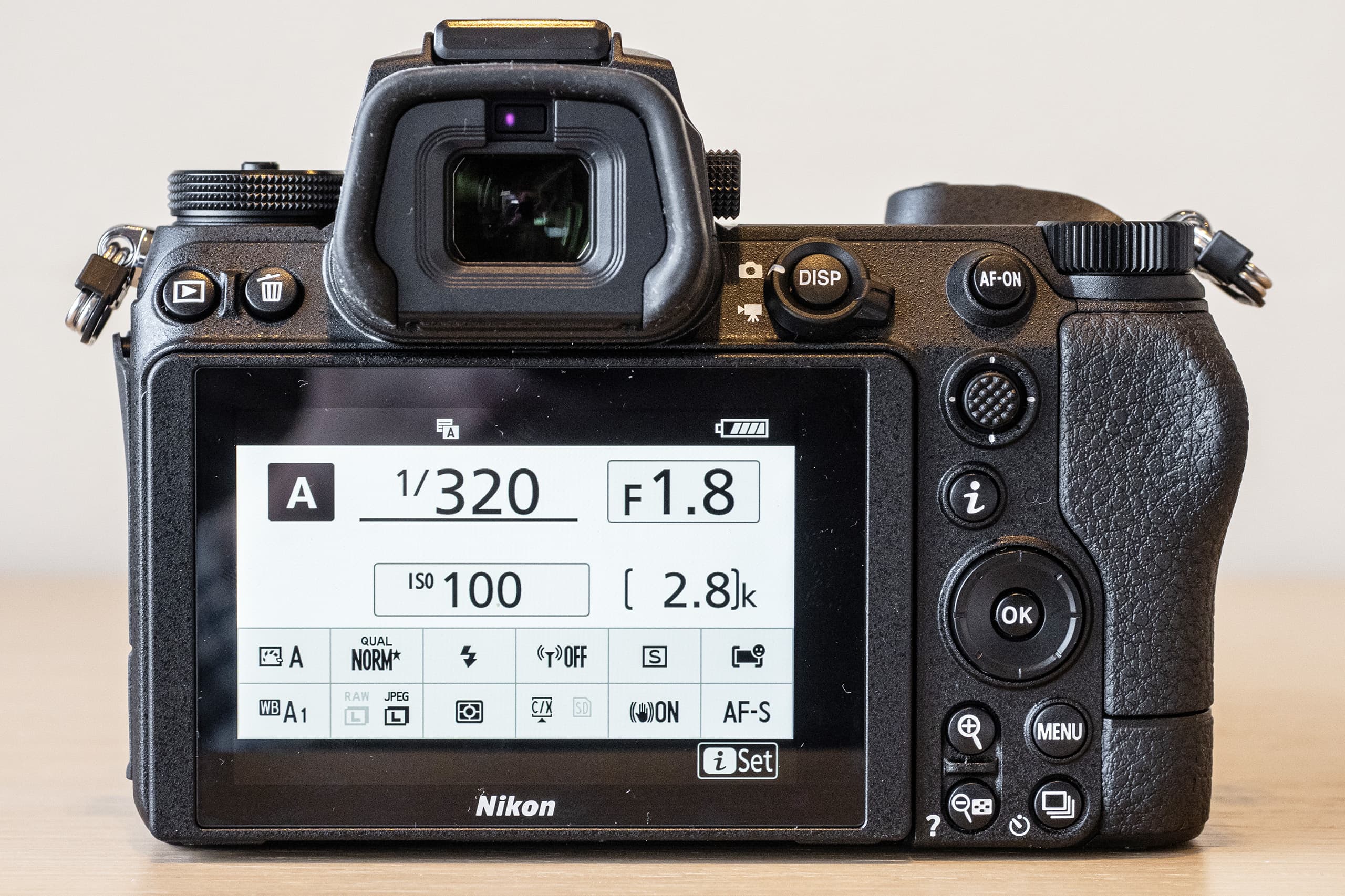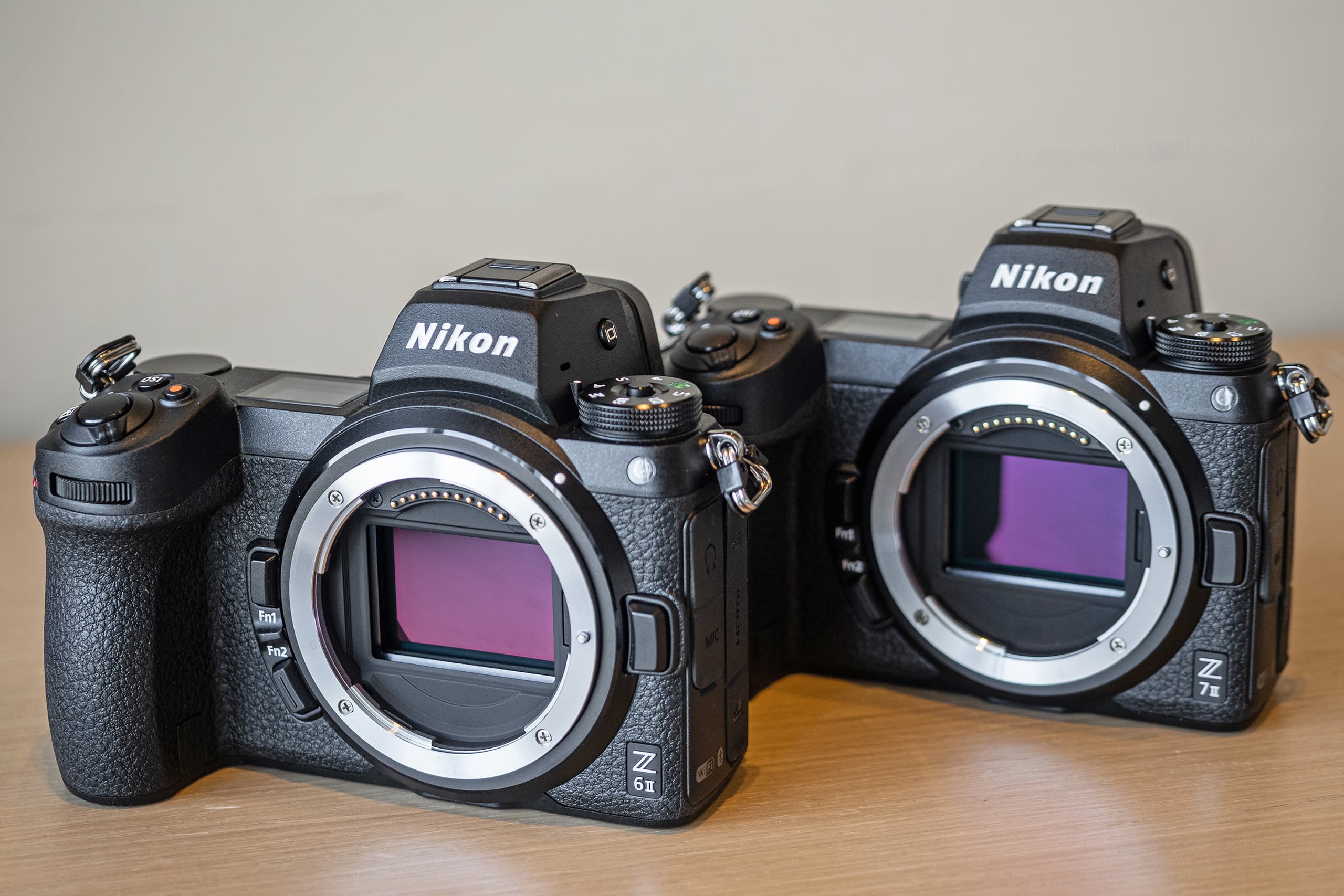Nikon Z7II and Nikon Z6II: At a glance:
- Z 6II: 24.5MP BSI-CMOS sensor, 14fps, £1,999 body-only
- Z 7II: 45.7MP BSI-CMOS sensor, 10fps, £2,999 body-only
- 5-axis in-body image stabilisation
- 3.2in tilting touchscreen
- 3.69m-dot electronic viewfinder
- 4K video recording
Two years ago, Nikon joined the full-frame mirrorless market with a pair of cameras, the Z 6 and Z 7. These followed the approach, originally laid down by Sony, of using identical body designs but sensors of different resolutions, with the Z 6 being a 24MP all-rounder and the Z 7 a 45.7MP high-resolution stills specialist. We liked both cameras a great deal, with the Z 6 winning our Product of the Year award for 2019. However certain design decisions went down badly with the market, perhaps most notably the inclusion of a single memory card slot that used the expensive XQD format.
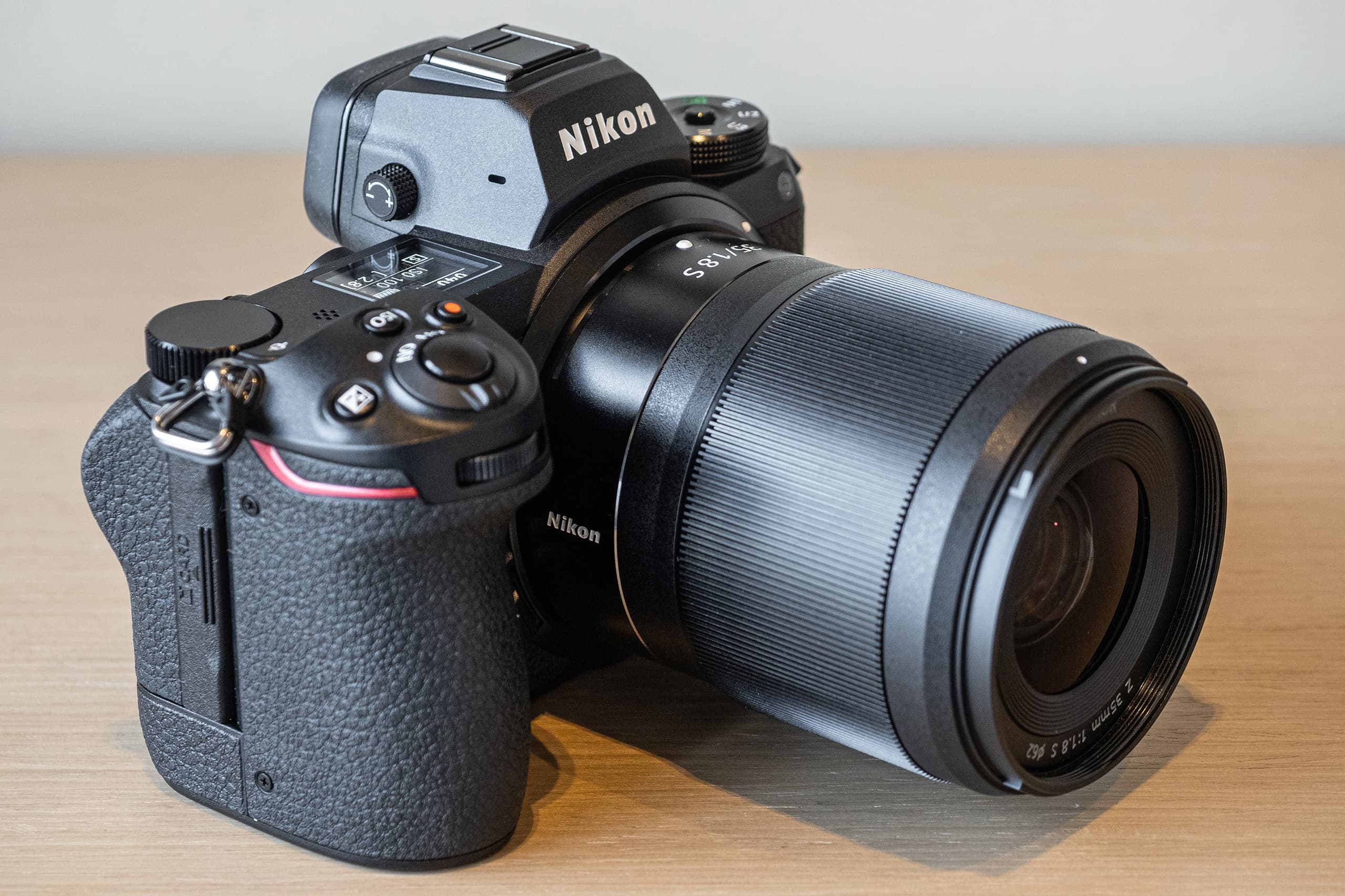
Externally the Z7II and Z6II look practically identical to their predecessors, aside from a larger memory card compartment door
Now the firm is releasing updated versions of both cameras, with the aim being to address their most obvious shortcomings. On the outside, the Z 6II and Z 7II look almost identical to their predecessors, and they use the same image sensors too. But crucially, both gain a second card slot that accepts the cheaper and widely compatible SD format. The cards can be used in backup, overflow or segregated recording modes.
They also boast dual Expeed 6 processors, which provide improved autofocus, meaning that face and eye tracking is now available during video recording for both humans and animals. Both can shoot faster and for longer; the Z 6II can reach 14 fps with a buffer of 124 raw or 200 JPEG frames, while the Z 7II achieves 10fps for 50 raws or 200 JPEGs. In addition, they now accept a proper vertical grip, the MB-N11, which offers duplicate controls for portrait format shooting (see below).
Other improvements include autofocus in light levels as low as -6EV when using lenses of f/2 or faster; the ability to update the camera’s firmware using your smartphone via Nikon’s SnapBridge app; and the option to power the camera during shooting using a USB-C supply.
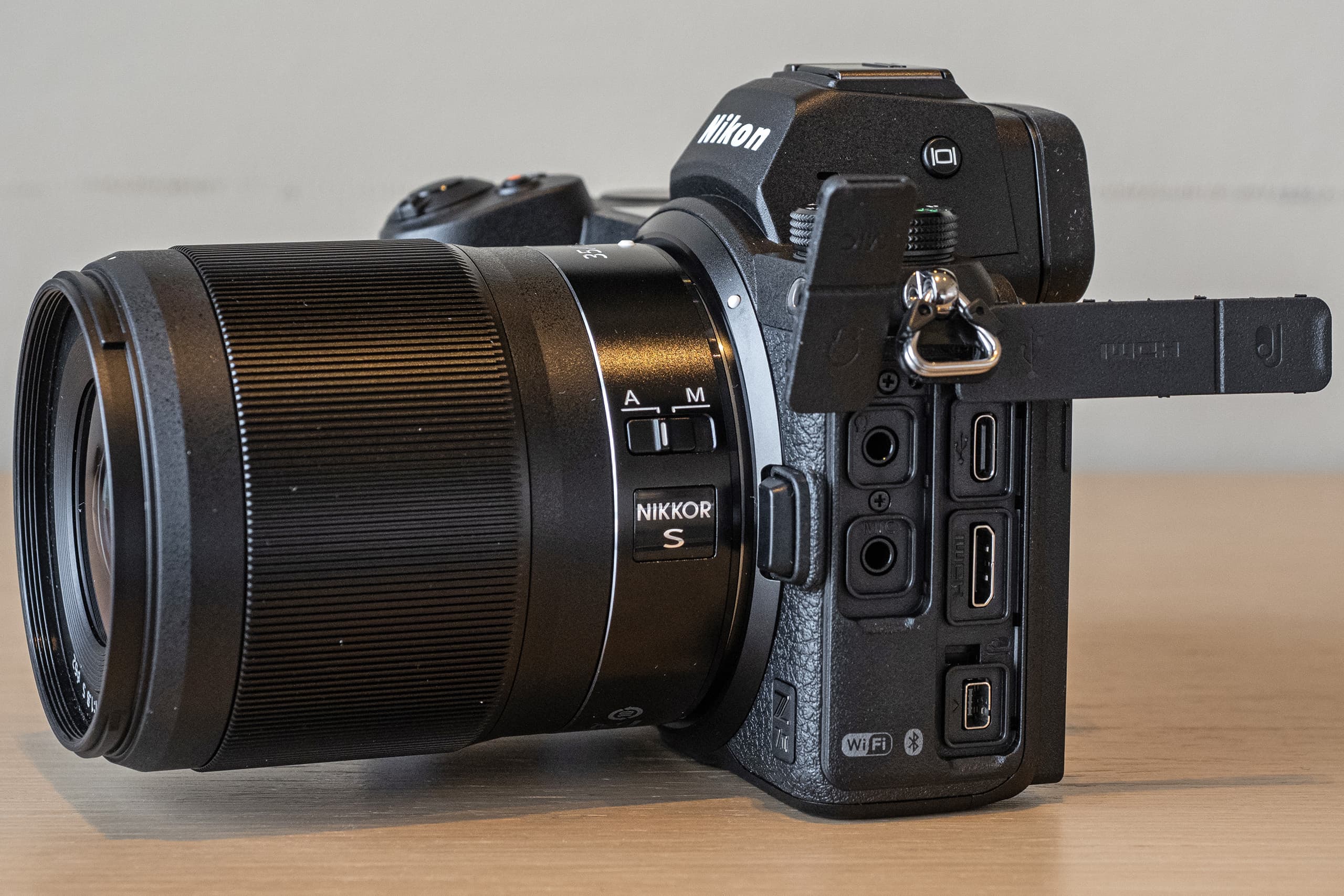
The Z7 II has the same connectors as before – microphone, headphones, USB-C, micro HDMI, and DC2-type remote release – and can now be powered via its USB port
Video recording at 4K resolution and 60fps will be available on the Z 7II from the start, and is promised for the Z 6II via a firmware update in February 2021. In addition, the cameras will be able to output ProRes raw video over HDMI to an external recorder.
Familiar design
In most respects, though, the Z 6II and Z 7II are pretty much carbon copies of their predecessors, and you’d be hard-pressed to tell them apart. They employ the same SLR-shaped design, with a large, comfortable handgrip, central viewfinder, and tilting rear screen. In terms of styling they may not look much like Nikon’s DSLRs, but they work in pretty much exactly the same way when you’re out taking pictures.
Indeed the new models inherit their predecessors’ excellent handling, with all the same controls in all the same places. DSLR users will find all the key buttons and dials that they expect, including twin electronic controls dials for changing exposure settings (one each under the forefinger and thumb), a well-placed AF-area joystick and AF-ON button, and top-plate ISO and exposure compensation buttons. Nikon has also retained the top-plate status panel that it left off the recent Z 5.
Look really carefully, though, and you’ll find that the body is fractionally thicker to accommodate the second card slot, although this has no real impact on how it feels in your hand. However as the comparison below shows, the eyepiece overhangs the screen by a little less than before. The viewfinder housing has been subtly re-profiled, as well.

This comparison shows how the ‘mark II’ body (right) is slightly thicker than the original to accommodate the second card slot.
You get the same excellent viewfinder as before, with the 3.69-million-dot panel displaying a large, detailed image that faithfully reflects the image you’ll record. Nikon’s continued use of a tilt-only screen does, however, seem a little out-dated now that all of its competitors have adopted side-hinged fully articulated designs on their latest models. Some photographers still prefer the tilting option for its ease of use and the way it keeps the screen on the same axis as the lens, but it can’t be set to face forwards, and becomes useless when the camera is turned to portrait format.
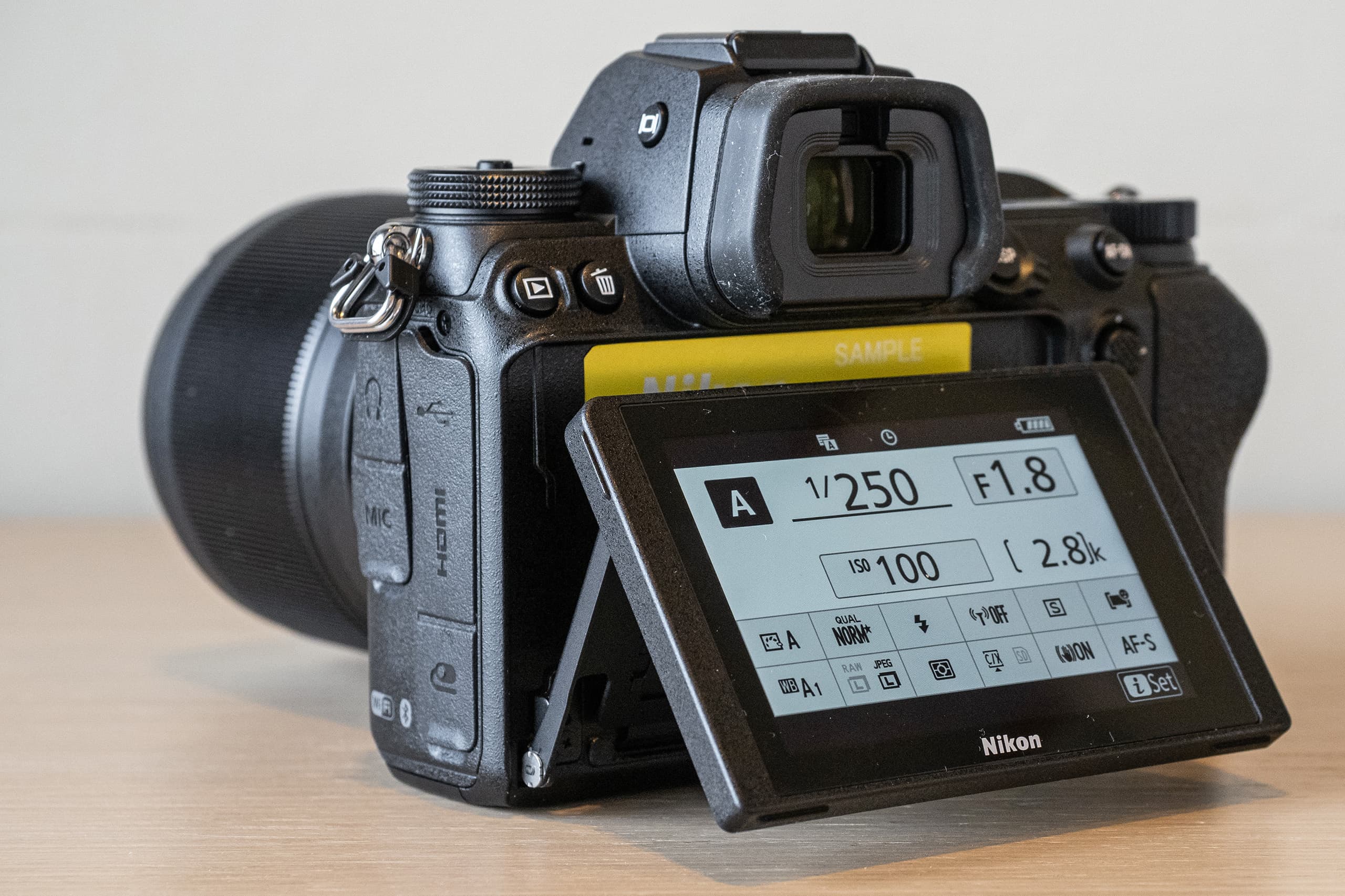
The new models employs the same large, high-resolution viewfinder and tilting rear screen as before.
Key features include a dust and drip resistant body design for use in demanding conditions, and 5-axis in-body image stabilisation to help keep both still images and video footage sharp, no matter what lens you use. This includes both native Z-mount optics, and the huge range of F-mount SLR lenses that can be used via the FTZ mount adapter.
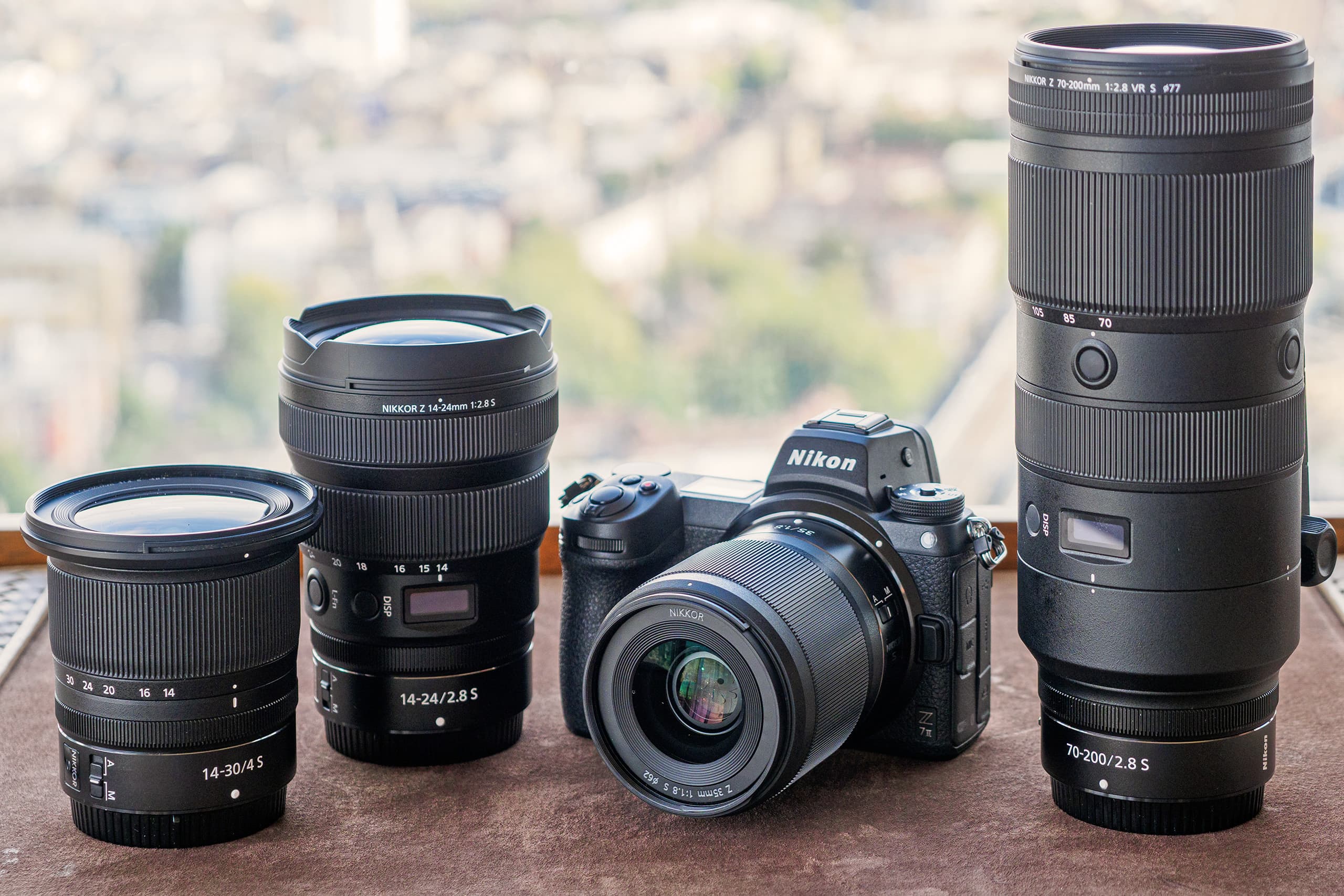
Nikon’s Z-mount lens range is starting to build up nicely. Here you can see the 14-30mm f/4, 14-24mm f/2.8, 35mm f/1.8 and 70-200mm f/2.8 optics.
On the subject of lenses, Nikon’s Z-mount line-up is progressing nicely, including a full set of pro-spec f/2.8 zooms, a couple of small but high-quality f/4 zooms, and an impressive range of f/1.8 primes that give superb optical quality in a relatively compact size. The firm’s lens roadmap also reveals that a good range lenses is planned for the near future, encompassing everything from compact primes, through macro lenses, to super-telephoto zooms.
Nikon MB-N11 vertical grip
One quirk of the original Z 6 and Z 7 is that they can’t accept a proper vertical grip, instead employing the MB-N10, that simply holds a pair of batteries for extended shooting or video recording time. Nikon has fixed this with the mark II models, as thanks to a new set of contacts inside the battery compartment, they now work with the MB-N11 vertical grip that offers a duplicate set of controls. These include a shutter button, front and rear dials, AF-ON button and AF-area selector joystick.

The new MB-N11 grip will hold two batteries and provides a duplicate set of controls for portrait-format shooting
Like its predecessor, the dust- and drip-resistant MB-N11 accepts a pair of batteries to practically double the camera’s shooting stamina for either stills or video. In one of those moves that looks so obvious you wonder why everyone else isn’t doing it, the MB-N11 also includes a USB-C port that allows charging of both batteries inside the grip, which could negate the need to carry an external charger. However you’ll need to use either the EN-EL15c or EN-EL15b battery variants – older versions can’t be changed in the camera or grip. The MB-N11 is available to pre-order now for £359.
Nikon WR-R11 Wireless Remote Controller sets
Nikon has also unveiled a pair of radio-frequency wireless remote controller sets. These comprise two parts, the WR-T10 shutter release transmitter, and a transceiver that plugs into the camera’s remote socket. Multiple units can be linked to a single transmitter, allowing several cameras to be triggered simultaneously. In addition, the device can be used to control external flashes such as the Sb-5000 Speedlight from the camera using Nikon’s Advanced Wireless Lighting System.
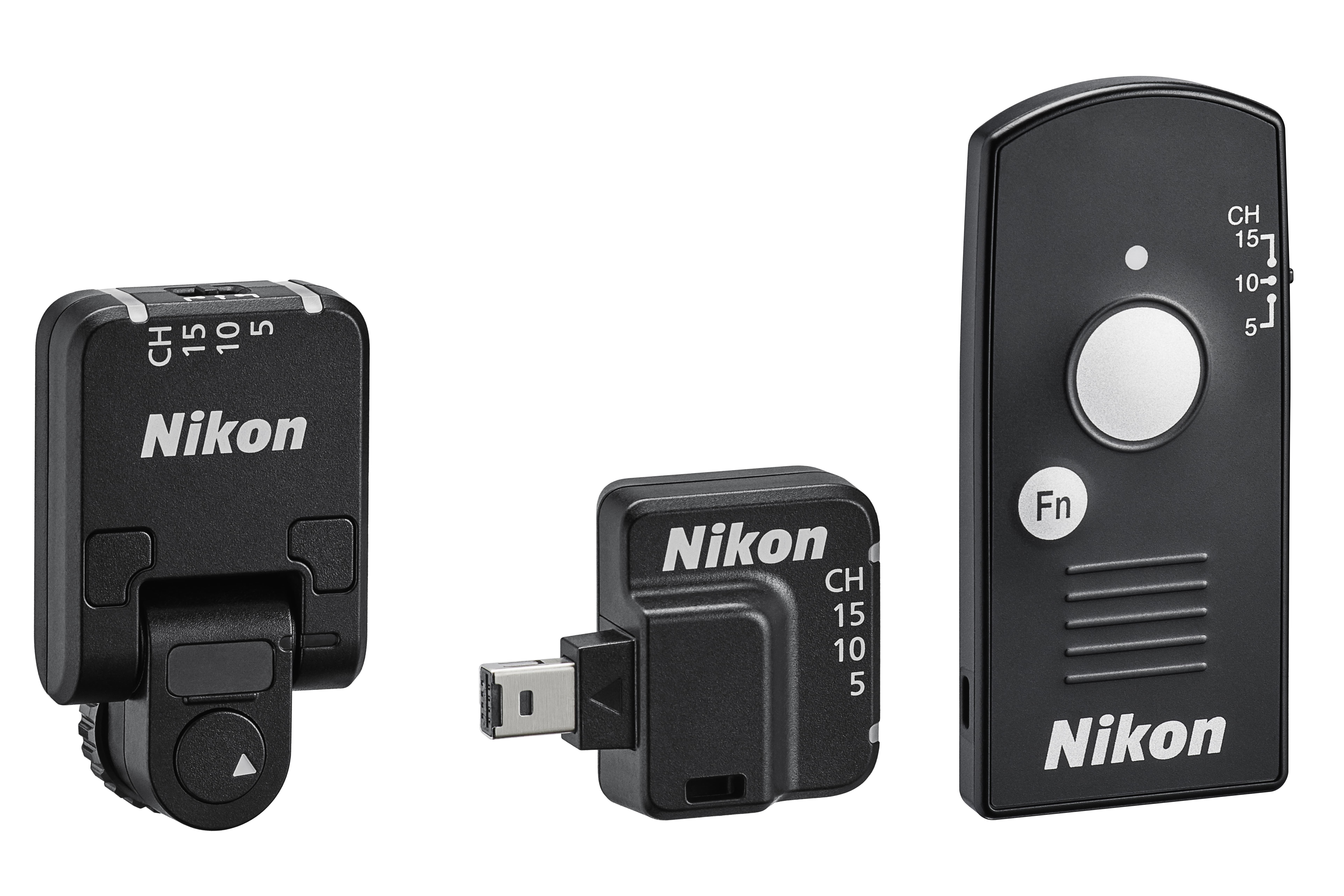
Nikon’s WR-R11 will come in two versions, one for the firm’s 10-pin connector (left) and the other for its smaller DC2-type socket, as used by the Z-series cameras (centre)
The WR-R11a version is for use with cameras than have a 10-pin socket, while the WR-R11b set is for cameras that use the DC2-type connector, including the Z series models. The complete set with both parts will cost £209, while the transceiver is £149 on its own.
Pricing and availability
Both the Nikon Z 6II and the Z 7II will be available either body-only, or in kits with the FTZ mount adapter and/or the Nikkor-Z 24-70mm F4 S lens.
The Z 6II will cost £1,999 body only, £2,139 with the FTZ adapter, £2,549 with the 24-70mm F4, and £2,679 with both. Meanwhile the various Z 7II options will cost precisely £1000 more. They’re due to go on sale this winter.
Nikon Z 6II and Z7 II: First impressions
Nikon hasn’t necessarily done anything radical with these ‘mark II’ cameras, but has instead concentrated on fixing the originals’ most obvious weaknesses. Its carefully calibrated set of updates should make both models more attractive to demanding users who require more reliable continuous autofocus, or need to be able to back-up their images to two cards during important shoots such as weddings.
However, it seems there’s another group of Nikon users who feel that the Z models have strayed too far from the firm’s DSLRs in terms of design and styling. They’re less likely to be won over by the new models, as the Z6II and Z7II again adopt a very different aesthetic to the firm’s DSLRs. This stands in contrast to Canon’s approach of making its recent EOS R5 and R6 models look as much like their mirror-toting siblings as possible. But for those who are more interested in how well a camera works than how it looks, the Z6 II and Z7 II are sure to be extremely capable image-making tools.

